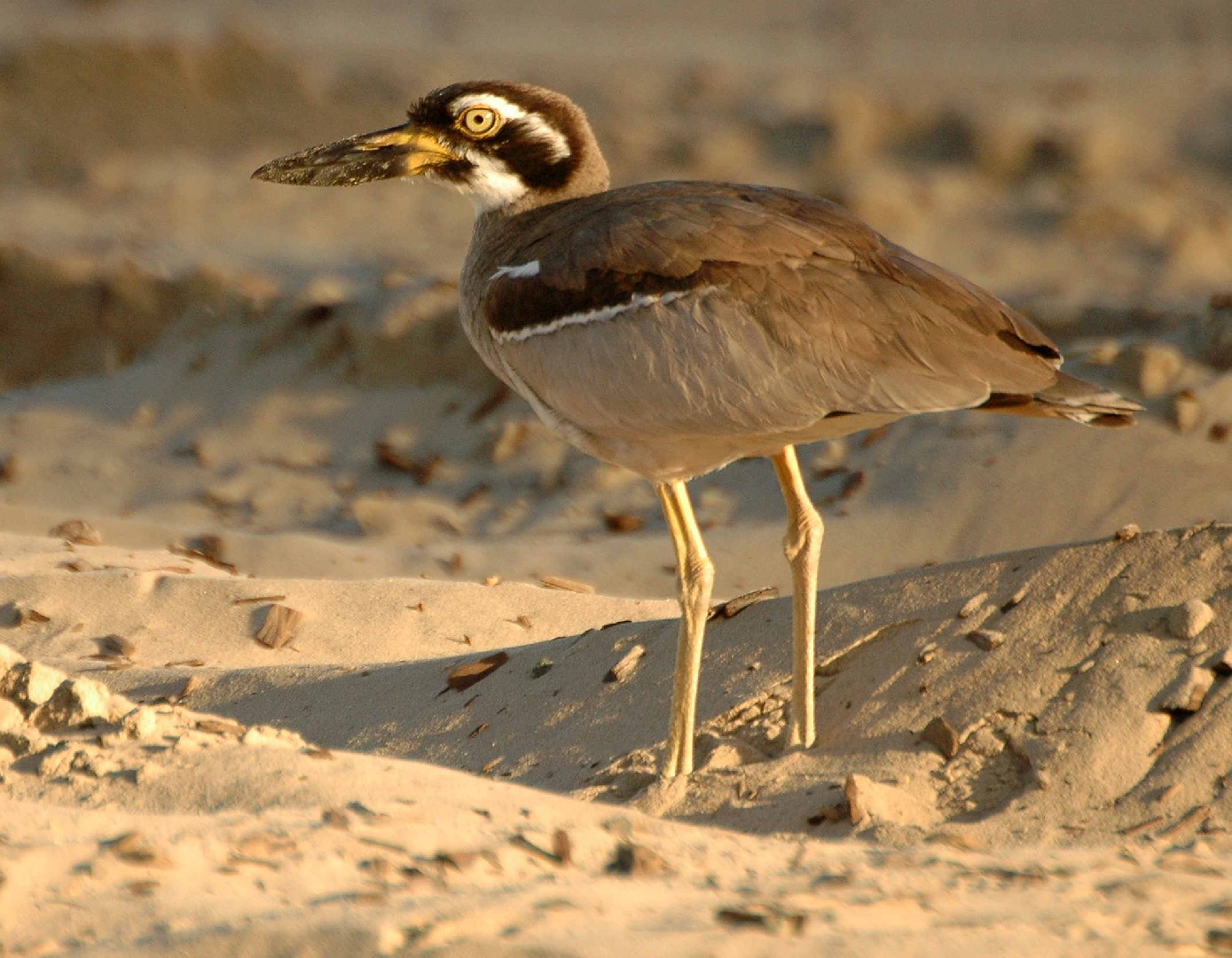Beach Stone-curlew
A species of Greater Thick-knees Scientific name : Esacus magnirostris Genus : Greater Thick-knees
Beach Stone-curlew, A species of Greater Thick-knees
Botanical name: Esacus magnirostris
Genus: Greater Thick-knees
Content
Description General Info
 Photo By Aviceda , used under CC-BY-SA-3.0 /Cropped and compressed from original
Photo By Aviceda , used under CC-BY-SA-3.0 /Cropped and compressed from original Description
Beach Stone-curlew is a ground-dwelling bird and one of the largest shorebirds in the world with a average height for 56 cm. It usually stays on shores in Australasia and has a diet of crabs and other marine crustaceans. Believed to be monogamous, pairs will bread in a same area for years and the young may be independent till 7-12 months old.
Size
57 cm
Nest Placement
Ground
Feeding Habits
Beach Stone-curlew predominantly consumes crabs, occasionally taking other crustaceans, insects, and molluscs. Actively forages during the day, with potential crepuscular and nocturnal habits, employing stalking and lunging techniques on intertidal zones. Utilizes its robust bill to dismantle prey before ingestion.
Habitat
The habitat of beach Stone-curlew is distinctly coastal, including both island and mainland beaches across broad geographic regions such as Melanesia. Their adaptive nature allows them to inhabit diverse beach types, including those composed of sand, mud, stones, and rock. Beach Stone-curlew is also found in areas with varying degrees of wave exposure, from sheltered shores to surf-swept coasts, and is frequently present at river mouths and offshore sandbars. While commonly associated with coastal zones, beach Stone-curlew occasionally utilizes inland dunes, edges of coastal lagoons, and navigates mangrove environments.
Dite type
Piscivorous
General Info
Feeding Habits
Bird food type
Scientific Classification
Phylum
Chordates Class
Birds Order
Shorebirds Family
Stone-curlews Genus
Greater Thick-knees Species
Beach Stone-curlew